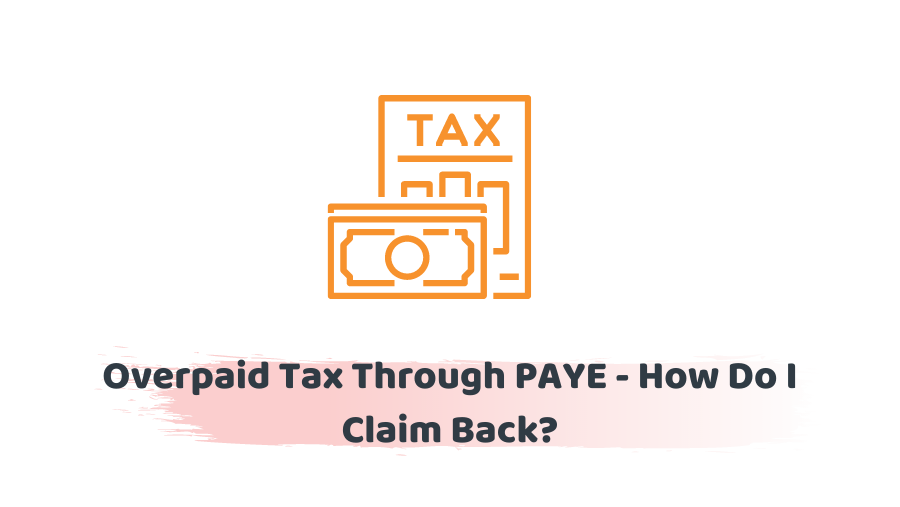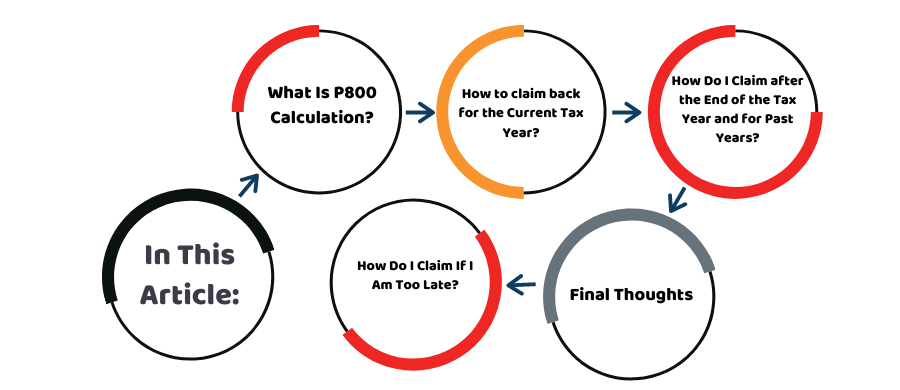This post sees what to do in the event that you have paid an excess of tax on your wages or benefits. What is possible for making a case of how to claim back tax?
First, however, we take a gander at HMRC’s P800 charge computation measure, which might mean you don’t have to guarantee reimbursement. As HMRC will give any reimbursement consequently. In the event that you have not gotten a P800 charge computation from HMRC, and you have overpaid charge. You should make a case for a tax refund.
This post includes the following to focus on:
- What Is P800 Calculation?
- How to claim back for the Current Tax Year?
- How Do I Claim after the End of the Tax Year and for Past Years?
- How Do I Claim If I Am Too Late?
What is a P800 Calculation?
Your manager or annuity supplier gives HM Revenue and Customs (‘HMRC’) subtleties of how much pay you have gotten, how much expense you have paid, and the worth of any advantages in kind you have gotten during the assessment year.
Utilizing this data, HMRC does a programmed compromise toward the finish of each assessment year, to work out whether you have paid the perfect measure of tax. On the off chance that HMRC thinks you have not paid the perfect measure of assessment, they send you a P800 charge estimation. This estimation will show you what charge HMRC figure you ought to have paid.
In the event that HMRC thinks you have overpaid charge, they will send you a reimbursement of duty consequently – you don’t have to make a case of how to claim back tax.
For more data on what to do in the event that you get a P800 charge estimation, get in touch with our advisers to solve your business problems.
How would I Claim a Refund for the Current Tax Year?
In the event that you get work pay or annuity pay and pay charge through the PAYE framework, you may once in a while make good on a lot of duty. There are different purposes behind this. HMRC give a rundown of regular explanations behind an excessive charge of annual assessment emerging on business pay.
They likewise give a rundown of reasons why an excessive charge may emerge on annuity payments. In the event that you think you have overpaid charge through PAYE in the current expense year before the finish of the duty year reveal to HMRC why you think you have paid excessively.
Before you phone HMRC, you should assemble:
- your own subtleties – like your complete name, address, date of birth, and National Insurance number;
- subtleties of every one of your bosses or annuity suppliers – their PAYE conspire reference number, which ought to be displayed on your payslip, or ask your manager or benefits supplier for it;
- appraisals of your income and annuities from each hotspot for the current expense year.
Ensure you keep a note, in a protected spot for future reference, of:
- the date and season of the call;
- the name of the consultant you addressed; and
- information disclosed by both you and the HMRC counsel.
You might have to send in more data to help your case and assuming this is the case HMRC will tell you what administrative work you should supply.
We are a young and enthusiastic Firm in London providing accounting and taxation services. Feel free to schedule a meeting to meet your business needs and grow like never before!
How Do I Claim after the End of the Tax Year and for Past Years?
On the off chance that you have paid an excessive amount of expense through your business and the finish of the tax year in which your overpaid charge has effectively passed you can make a case for a refund by keeping in touch with HMRC. Learn how to claim back tax before you start the process.
Imprint the highest point of your letter plainly with ‘reimbursement guarantee’ so HMRC focuses on it on receipt.
You can keep in touch with HMRC utilizing the duty office address of your present manager or the postal location on the latest correspondence you have from HMRC. On the off chance that you don’t have any new reports or letters from HMRC, write to:
- HM Revenue and Customs
- Pay As You Earn and SA
- BX9 1AS
For the most part, your letter, ought to include:
- give your full close to home subtleties – your name, address, and public protection number;
- incorporate however much data as could reasonably be expected about your business history, for instance, PAYE reference numbers for your managers, dates of work, the amount you acquired, and how much expense was deducted;
- encase duplicates of P60s and P45s on the off chance that you have them – keep the firsts;
- say why you think you have expected a reimbursement;
- be marked and dated in ink.
Keep a duplicate of your letter and any fenced-in areas and request the Post Office for proof from posting if there should be an occurrence of later questions.
HMRC says they ordinarily intend to handle PAYE reimbursements inside about a month of receipt. Now and again, HMRC should do security checks. It may assist with accelerating the reimbursement in the event that you request that HMRC pay it directly to your ledger. To demand an immediate bank move, remember for the letter:
- the name of the record holder(s);
- the sort code; and
- the record number.
Yet, know that HMRC should make extra security checks on the off chance that you demand reimbursement into a record that isn’t in your own name.
How Do I Claim If I Am Too Late?
On the off chance that you think you have overpaid charge in charge years that are ‘shut’ to recovers, there is a standard known as Extra-legal Concession B41 which can permit HMRC to compensate the charge for those previous years. This just applies in restricted conditions.
This concession just applies in circumstances where HMRC or another administration official, like the Department for Work and Pensions, have made a blunder in your expense issues and where there is no question about the current realities of the case.
Conclusion:
To sum up the discussion, we will say, it is uncommon for HMRC to give this concession so you should set out the obvious proof with respect to what the mistake was, which brought about you settling an excessive amount of assessment. We hope this post helped to understand how to claim back tax.
Still, confused? You need to talk to our Experts to get your queries answered swiftly. Contact Us now!






















































